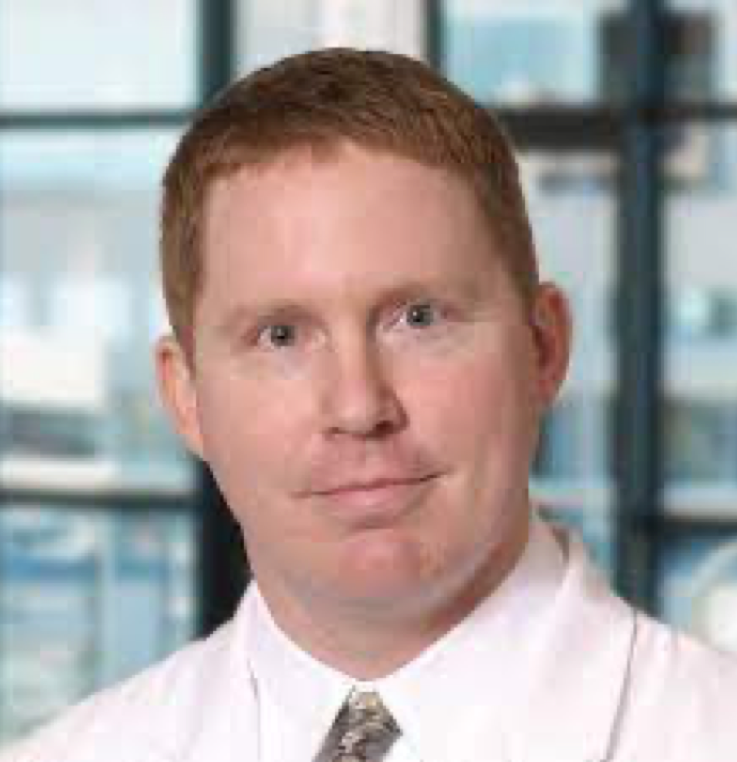David Renton1, Jin Ye Yeo2
1Department of Surgery, The Ohio State University Wexner Medical Center, Columbus, OH, USA; 2ALES Editorial Office, AME Publishing Company
Correspondence to: Jin Ye Yeo. ALES Editorial Office, AME Publishing Company. Email: ales@amegroups.com
This interview can be cited as: Renton D, Yeo JY. Meeting the Editorial Board Member of ALES: Dr. David Renton. Ann Laparosc Endosc Surg. 2024. Available from: https://ales.amegroups.org/post/view/meeting-the-editorial-board-member-of-ales-dr-david-renton.
Expert introduction
Dr. David Renton (Figure 1) obtained his MD degree from Louisiana State University in New Orleans, and completed his residency at University of Alabama at Birmingham. He then went on to The Ohio State University and their Minimally Invasive Surgery Fellowship. Once completed, he taught at the University of South Carolina for 2 years before being asked back to OSU to become Chief of Surgery for their East Hospital.
Dr. Renton enjoys teaching, and has helped create several video atlases through multiple publications to help others learn surgical technique. He specializes in complex abdominal wall reconstruction, robotics, and advanced laparoscopic surgery. He is currently an Associate Professor of Surgery at The Ohio State University.

Figure 1 Dr. David Renton
Interview
ALES: What inspired you to specialize in complex abdominal wall reconstruction?
Dr. Renton: This is an underserved area of patients who require complex operations to repair their hernias. By taking a team approach, I believe that we can give them the best chance at an optimal outcome. The cases are usually quite complex, as patients usually have had several operations, and possibly repairs of their hernias in the past. This makes them challenging operations, which I enjoy.
ALES: Can you share your perspective on the evolution of robotic and laparoscopic technology as applied to complex abdominal wall reconstruction, especially regarding its impact on outcomes?
Dr. Renton: We have come so far in service of superior patient outcomes when it comes to hernia repair. We can now do an operation that used to require a several-day admission and carried a high risk of wound complication as an outpatient, with minimal risk. From our data so far, our outcomes in terms of recurrence are equal, if not better, than those of the open approach, and the trauma to our patients is much less.
ALES: How do you view the learning curves and skill transference for young surgeons when comparing robotic and laparoscopic techniques in abdominal wall reconstruction?
Dr. Renton: There is a huge learning curve when it comes to these procedures. This cannot be ignored. If you wish to do these procedures, you need to see a few procedures, and then partake in a few with expert guidance. When these procedures are done incorrectly, they can have a very deleterious effect on the patient’s outcome.
ALES: How do you integrate robotic systems with advanced laparoscopic methods in complex cases, such as abdominal wall reconstructions, to maximize patient outcomes?
Dr. Renton: We have taken a “full steam ahead” approach when it comes to robotics at the Ohio State University (OSU). We incorporate it into all facets of our practice, and continue to monitor patient outcomes to see what benefits we are affording them by doing so.
ALES: In addition to research, you are also involved in teaching. What strategies do you find most effective in teaching surgical techniques to residents and fellows?
Dr. Renton: The key to teaching in surgery is having measurable and obtainable goals, and then providing proper feedback during and after surgery. You have to tailor the goals to the level of the trainee, and sometimes guide them towards an attainable goal.
ALES: What legacy do you hope to leave in surgical education for future generations of surgeons, especially regarding the use of technology and visual resources in training?
Dr. Renton: I believe that we should embrace the new technology, specifically the use of videos when it comes to teaching. There should be examples of every case we do made available to our trainees, including examples of pitfalls that could befall them while finishing their learning curves. We have created a video atlas here at OSU that helps our trainees enter the operating room with a mental model of the steps of the operation, so they can better understand the nuances as they arise.
ALES: As a newly appointed Editorial Board Member, what are your expectations and aspirations for ALES?
Dr. Renton: I would love to see a video component in the journal. We should encourage submissions with video components and create archives of entries to help those who wish to learn these skills.
